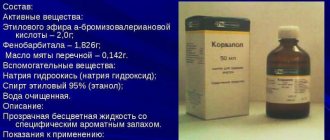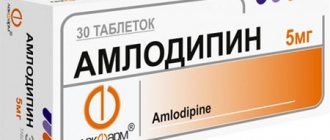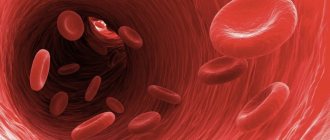Elimination of lipid metabolism disorders is possible only with medication. An increase in the level of blood cholesterol, low-density lipoproteins and triglycerides causes the development and progression of atherosclerosis, hypertension and ischemic heart disease (coronary heart disease).
In addition to the direct effect on blood composition, the use of lipid-lowering drugs helps to normalize the condition of the myocardium. In the future, this prevents the development of strokes and heart attacks. Fibrates or statins: which is better to use in case of high blood cholesterol?
What are fibrates and how do they work?
In medical prescriptions for elevated lipid profiles, the drugs most often found in the following main groups are fibrates and statins. This article examines the first group in detail.
Fibrates are chemical compounds that are derivatives of fibric acid .
The mechanism of action of fibrates is to suppress the production of low and very low density lipoproteins in the liver. In addition, fibrates accelerate the removal of harmful cholesterol from the body. Under the influence of these drugs:
- the general condition of blood vessels improves,
- the elasticity of the vascular wall increases,
- symptoms of high blood cholesterol decrease.
Drugs from the fibrate group have important advantages over other lipid-lowering drugs. This is the ability to influence an increase in the synthesis of high-density lipoproteins (HDL) and a decrease in triglyceride levels. As is known, this lipid fraction is “good cholesterol” and has a beneficial effect on the vascular system. Their high concentration in the blood reduces the likelihood of the development and progression of atherosclerosis.
The main form of production of fibrates according to the RLS is tablets. Their active component, lipoprotein lipase, when entering the bloodstream, is transported to the liver, which triggers its main lipid-lowering mechanism.
It should be noted: fibrates do not treat the consequences of atherosclerotic processes and cannot remove already formed cholesterol plaques in the vascular walls. These drugs only inhibit their spread, growth, and formation of new foci of infiltration and fatty lesions. This is why early diagnosis and timely initiation of treatment are so important.
What is better to choose
The prescription of drugs is at the discretion of the attending physician, but the main difference between fibrates and statins is the effect on blood triglyceride levels. When it increases significantly, medications based on fibric acid are recommended, and in all other cases, statins are preferred.
It should be borne in mind that Simvastatin and Lovastatin are prodrugs, that is, good liver function is required to convert them into the active compound. Other statins do not require such transformation, so their bioavailability is higher.
Indications for use
Tablets of drugs from the fibrate group are prescribed by doctors for lipid metabolism disorders. The main goal of treatment is to reduce cholesterol synthesis. Thus, the amount of LDL in the blood will decrease and the number of HDL will increase. These two compounds are antagonists, and high-density cholesterol will prevent the destructive effects of bad (low-density) cholesterol.
In addition, fibrate preparations will lead to normal levels of triglycerides in the blood, and in general will balance the processes of fat metabolism in the body. Each individual drug from this group has its own individual indications for use.
How can statins help with coronary artery disease?
Taking drugs in this group reduces the risk of complications of atherosclerosis, primarily impaired blood supply to the myocardium. They can be recommended to patients not only with existing angina, but also for preventive purposes to persons at risk of coronary artery disease. These include:
- elderly people,
- having close relatives who have suffered a heart attack or stroke,
- those suffering from excess body weight, diabetes mellitus,
- drinking alcohol in large doses,
- patients with impaired lipid metabolism,
- smoking,
- preferring fatty meat products.
After an acute violation of the coronary and cerebral circulation, with obliterating endarteritis, statins are prescribed to almost all patients to prevent complications and relapse of these diseases.
The drugs significantly lower the blood levels of cholesterol and atherogenic lipoproteins, and also prevent the attachment of fatty plaque to the vessel wall, restoring normal rheological parameters of the blood.
List of the best new generation drugs
These medications based on their active substance . They are divided into three generations, each of which is presented on the pharmacy market under different trade names.
- 1st generation fibrates: clofibrate
- 2nd generation fibrates: gemfibrozil, bezafibrate
- 3rd generation fibrates: fenofibrate, ciprofibrate
Fenofibrate
This is a drug of the latest, third generation. In medical prescriptions it can now be found most often among all other fibrates. It owes its popularity to its antiplatelet properties - it prevents the adhesion of thrombotic masses and other small fractions of blood, which significantly reduces the risk of blood clots. The main mechanism of lipid-lowering action, like other fibrates, is that it affects the harmful fraction of cholesterol, LDL, reducing its synthesis in the liver and, in parallel, promotes an increase in the HDL parameter - “useful” cholesterol.
If we compare fenofibrate with drugs of other generations, it has a much smaller range of side effects. Higher bioavailability and easier digestibility. The maximum dose per day is 200 mg. The drug must be taken during meals. In this way, the most complete absorption of the medication occurs.
Pharmacies offer its analogues with the same main active substance, under the names Lipantil, Traykor, Nolipax, Lipofen, Fenofibrate Canon.
Bezafibrate
It is produced in tablets with a dosage of 200 milligrams. Unlike fenofibrate, they are taken before meals. The course of treatment is one month, then a break of the same duration is taken. This drug of the fibrate group is characterized by high bioavailability and rapid excretion from the body.
On pharmacy shelves it can also be found under the brand names Besifal, Tsedur, Oralipin.
Choline fenofibrate
It is a prodrug that is directly transformed into fenofibric acid in tissues. Prescribed to patients with hypercholesterolemia types III, IV and V (according to the Fredrickson classification). The maximum daily dose is 135 mg. Incompatible with alcohol.
Can be found under the trade name Trilipix.
Clofibrate
This is a drug belonging to the 1st generation of fibrates. Currently, it is no longer used due to too frequent side effects. Its use can lead to cholestasis in the kidneys, the formation of stones in the hepato-biliary system and exacerbation of cholelithiasis.
Also, against the background of its administration, the muscular system also suffers. This is manifested by various neuromuscular lesions, myositis and myalgia. Patients may complain of background fatigue, weakness, and symptoms of intoxication. In the past (especially at the end of the twentieth century), it was prescribed to patients with atherosclerotic lesions of the coronary, peripheral and cerebral vessels.
Trade names of this type of drug: Lipomide, Amotril, Lipavlon, Miskelon.
Ciprofibrate
This drug has a number of differences in its pharmacological action - it changes the pathway of cholesterol synthesis. This occurs due to a disruption in the synthesis of mevalonic acid in the liver (mevalonic acid is an intermediate substance in the chain of cholesterol formation). As a result, total cholesterol, its low-density fractions and triglycerides noticeably decrease in numbers. On the contrary, HDL increases. It is used for isolated and associated endogenous hypercholesterolemia, as well as for those conditions when other medications cannot cope. Commercial name: Lipanor.
Types of fibrates
New generation products are presented in 3 groups. Clofibrate. Now this class is almost never used, as it has been established that it provokes cancer of the gastrointestinal tract and pancreas.
Gemfibrozil, bezafibrate. The substances are similar to clofibrate, but not as toxic. Effectively reduces triglyceride levels. They help when other means do not improve the patient’s condition, and special diets are ineffective.
Fenofibrate, ciprofibrate. The most prescribed drugs. Acts like its counterparts, additionally reducing the concentration of uric acid, and is used for gout. Reduces the risk of complications in type 2 diabetes.
List of the best fibrates
This includes a number of drugs from imported and domestic manufacturers. The composition and place of release determine the cost. In Russian pharmacies the price starts from 500 rubles. up to 2000 rub. Fibrates are common drugs:
- Clofibrate 500. Available in capsules. It has a number of contraindications and side effects. Analogs Lipomide, Amotril, Lipavlon. Now they are prescribed less frequently, as there are more modern analogues.
- Bezafibrate-based products. These include the brands Besifal, Tsedur, Oralipin. The course of treatment is 1 month, then you need to take a break. Taken before meals.
- Fenofibrate preparations. Brands such as Lipantil, Traikor, Nolipax, Lipofen, Fenofibrate Canon. Promotes an increase in good cholesterol. They are well absorbed and have minimal side effects. The tablets belong to the newest, more studied series.
I would like to note that there are medications with which fibric acid preparations cannot be taken. These are anticoagulants, hepatoxic drugs, statins.
Advantages and disadvantages
Clearly, fibrates have many benefits. They reduce triglyceride and cholesterol levels. Increase metabolism, increase the elasticity of blood vessels. They have an anti-inflammatory effect, fight free radicals, that is, they have the effect of antioxidants.
Disadvantages are also possible. Side effects occur in the form of nausea, diarrhea, vomiting, flatulence. The drug can depress the central nervous system and provoke allergic reactions. Causes drowsiness, fatigue, and in some cases causes depression.
Difference from statins
A group of drugs called statins are aimed at reducing triglyceride levels and reducing lipoproteins. The action is similar to fibrates. They come in 1st, 2nd, 3rd, 4th generations. They differ from fibrates, firstly, in the time of administration. Statins are taken at night; fibrates are not taken at a specific time of day. Statins have a significant caveat. They should not be used if you have any liver disease. They will aggravate symptoms and worsen the course of the disease.
Instructions for use
Like other lipid-lowering substances, fibrates should only be taken after consultation with a specialized specialist. Features in the instructions for use are present depending on the type of drug and its generation. Third generation medications are taken with meals, the rest - before meals. Frequency of administration: from one to three times per day.
Let's look at the contraindications and side effects of these effective cholesterol pills.
Side effects and contraindications
Fibrates are drugs that have quite serious effects on the body. Therefore, they are prescribed by a specialized doctor only after a full examination. Before prescribing, it is necessary to remember a number of contraindications for this group, namely:
- Fibrates are not used in pediatric practice. They are contraindicated for children.
- These drugs are also not prescribed during pregnancy and breastfeeding, since they have a teratogenic effect and can pass into breast milk.
- Hypersensitivity reactions to the drug or its components.
- Patients with concomitant liver pathology or kidney disease, in particular renal failure.
- Patients who abuse alcohol.
- Patients with a history of acute or chronic pancreatitis.
There are no natural fibrates; they are all chemical products. Therefore, like any synthetic substance, fibrates have some side effects. However, if in their first generation the list of side effects was several pages long, then in the last, third generation it was significantly reduced both in breadth and frequency. Along with other drugs of this generation, Fenofibrate is most often prescribed by doctors. Using his example, we will consider the characteristic side effects of this generation.
Statistical calculations of the consequences of taking Fenofibrate were carried out. This study included 4389 patients. Among them, over 90% of patients did not experience any negative effects of the drug. 8.9% of respondents noticed mild abdominal discomfort. 1.1% felt muscle weakness and moderate headaches. In addition to these most common side effects, the instructions for fibrates indicate a number of very rare complications - a decrease in hemoglobin in the bloodstream and a rash on the skin.
How are fibrates different from statins?
The main difference between both drugs in the treatment of lipid imbalance is their effect on triglyceride concentrations. If triglycerides are very high, then the doctor prescribes fibric acid derivatives. What is better, fibrates or statins for the treatment of hypercholesterolemia?
Do not forget that statins can only be taken if liver cells are functioning well.
First and second generation statins have a wide range of side effects, and today doctors very rarely recommend them for the treatment of hypercholesterolemia. 3rd and 4th generation statins have less negative effects on the patient’s body, but they are not suitable for everyone, and in case of pathologies of muscle tissue, they are completely contraindicated. In this case, treatment is carried out with fibrates in complex drug therapy with nicotinic acid or bile sequestrants.
The effect of both medications on lipid metabolism can reduce the risk of developing cardiac pathologies and prevent the formation of atherosclerotic tumors in the bloodstream system. Both drugs are used as primary and secondary prevention of myocardial infarction and stroke.
Doctors' opinions
Medical specialists speak quite warmly about fibrates. It is not for nothing that these drugs regularly appear in their prescriptions. They reduce blood cholesterol levels and are highly effective. According to observational studies, when taking medications from the list of fibrates, for example fenofibrate or gemfibrozil, patients experience a decrease in the risk of coronary heart disease, the condition of the blood vessels of the brain and heart is normalized, and the risk of developing heart attacks and strokes is reduced.
So, fibrates are medications aimed at combating high cholesterol. They are prescribed only by specialists for certain indications and are sold in pharmacies only by prescription. Fibric acid derivatives are included in the complex treatment of atherosclerosis. In addition, these are the main and irreplaceable drugs in the fight against increased triglycerides in the blood of patients.
Flaws
But these drugs also have their negative qualities. In addition to some of the side effects mentioned above, fibrates can cause nausea, vomiting, diarrhea, frequent headaches and migraines. They often have a strong impact on the patient’s mood and cause depression.
In general, this drug is well tolerated by patients. It has a positive effect on blood vessels and the heart. Cholesterol levels are also actively reduced through the use of fibrates. Allergic reactions were not observed when using fibrates.










